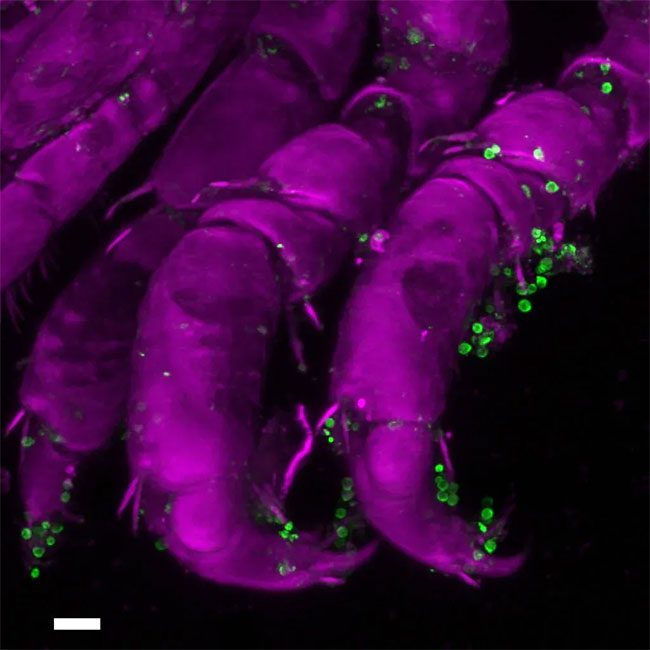Recently, scientists discovered a small crustacean species named Idotea balthica that can fertilize red algae, similar to how certain insects assist in pollinating terrestrial plants.
Myriam Valero, a biologist at Sorbonne University and one of the study’s authors, stated:
“The process of fertilization aided by animals is believed to have emerged among plant species when they first appeared on land around 450 million years ago. Red algae appeared over 800 million years ago, and the phenomenon of fertilization through intermediary animals in this species may predate this process in land plants. However, it is also possible that the mechanisms of animal-assisted fertilization in terrestrial and aquatic environments developed independently.”
The Idotea balthica aiding in the fertilization of red algae
In 2016, after scientists discovered that plankton could pollinate seagrass in the Caribbean, Valero became curious whether a similar phenomenon could occur with the red algae species Gracilaria gracilis.
To investigate this question, Valero and her colleagues placed a male and a female red algae plant about 6 inches apart in an aquarium. They then added 20 crustaceans of I. balthica to the tank. For comparison, they also set up another aquarium containing the male and female plants but without adding any crustaceans.
The research team found that the fertilization rates in tanks with crustaceans were over 20 times higher than those without. The scientists also collected crustaceans that had previously lived in the aquarium with the male algae and transferred them to the tank containing the unfertilized female plants. This also resulted in a higher fertilization rate. When observing the crustaceans under a microscope, they discovered spermatia – cells akin to the “sperm” of the algae that had adhered to the bodies of these animals.

“Sperm” of red algae attached to the bodies of Idotea balthica.
The researchers suspect that the crustaceans also benefit from this assisting behavior. Specifically, the algae clusters provide a safe hiding place from predators and are a rich food source.
Ecologist Jeff Ollerton, author of “Pollinators and Pollination: Nature and Society”, considers this the first study to document animals fertilizing algae, stating that it “truly expands our understanding of how algae reproduce.”
He remarked: “This type of interaction may have been occurring long before plants evolved, and the use of a third party to assist in reproduction may have deeper origins than we previously understood.”


















































